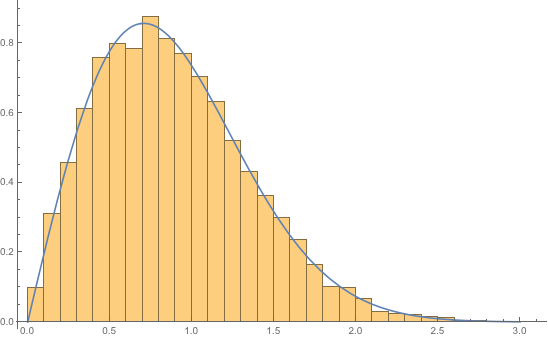Question:
$X_1 , X_2 , ... X_n$ are unif(0, 1) random variables and $Y_n = {\sqrt n} \min \{{\sqrt X_1}, {\sqrt X_2}, ... {\sqrt X_n}\} $ Consider the sequence $Y_1 , Y_2 , ... Y_n$ and give the pdf or pmf of the limiting distribution, if it exists
My attempt:
The Support of $Y_n$ is $(0, {\sqrt n})$ , so for $ y \le 0$ $F_{Y_n}$ $(y) = 0$ and for $y \ge {\sqrt n}$ we have $ F_{Y_n}$ $(y) = 1$.
Then for $y \in (0, {\sqrt n})$ we have:
$F_{Y_n}$ $(y) = P(Y_n \le y) \\ =P({\sqrt n} \min \{{\sqrt Y_1}, {\sqrt Y_2}, ... {\sqrt Y_n}\} \le y) \\ =P(\min \{{\sqrt Y_1}, {\sqrt Y_2}, ... {\sqrt Y_n}\} \le y/{\sqrt n}) \\ =[1 - (1 - (y/{\sqrt n}))]^n$
which gives you the cdf: $F_{Y_n}$ $(y) = \begin{cases} 1, & y \ge {\sqrt n} \\ [1 - (1 - (y/{\sqrt n}))]^n, & 0 \lt y\lt {\sqrt n} \\ 0, & \ y\le 0 \end{cases}$
Then: $\lim_{n\to\infty} F_{Y_n} (y) = \begin{cases} 1 - e^{-y}, & y \gt 0 \\ 0, & \ y\le 0 \end{cases}$
And the pdf is then: $f_{Y_n} (y) = e^{-y}$ where $y \ge 0$
Is this correct? Not very confident in what I have done.

